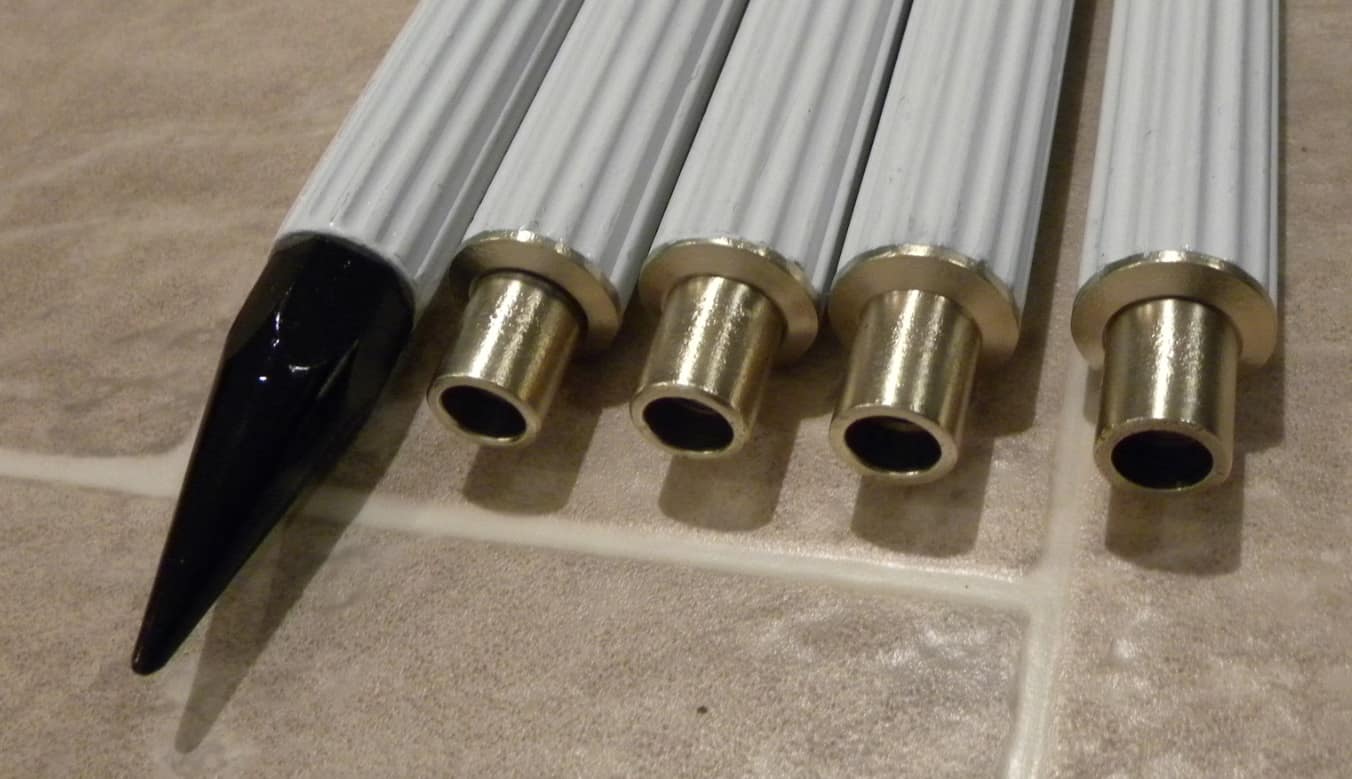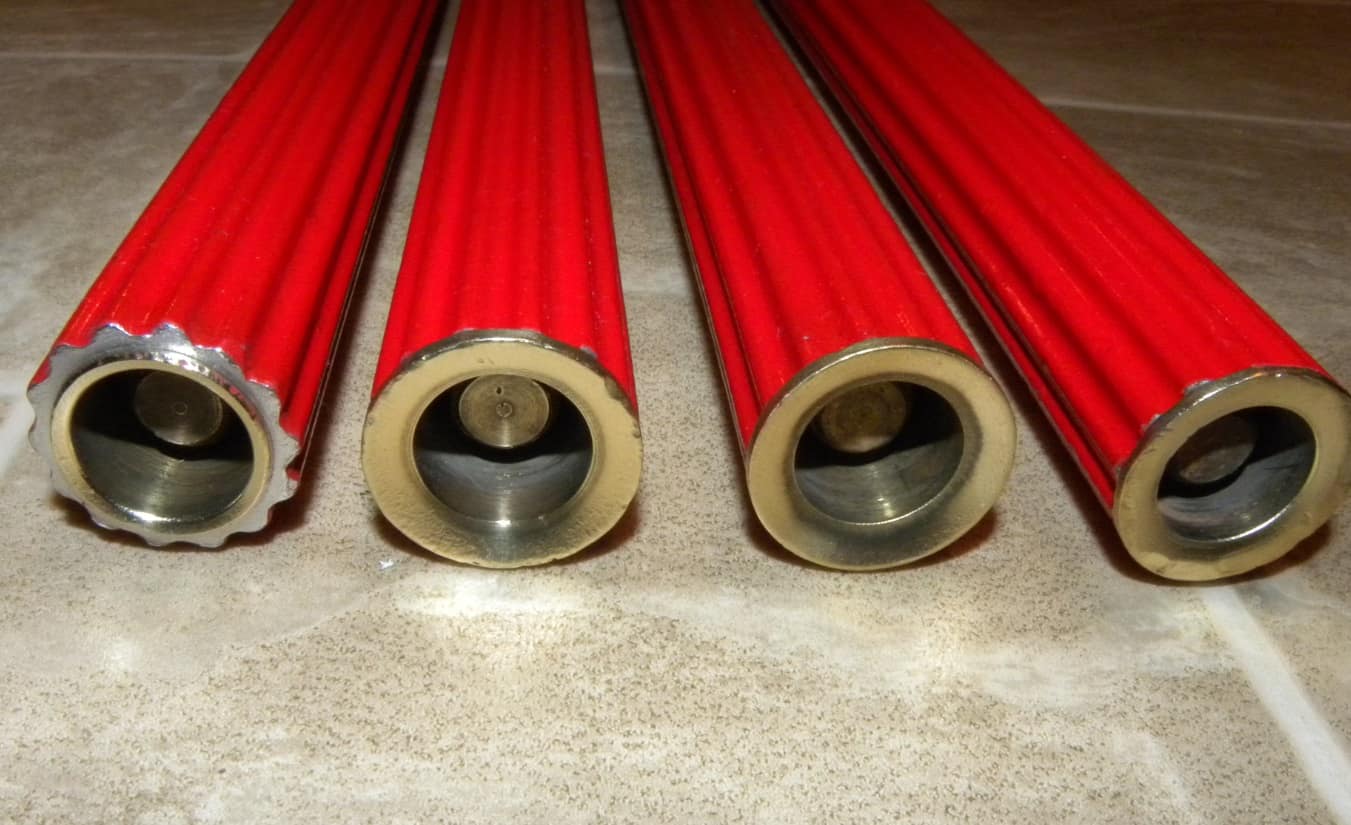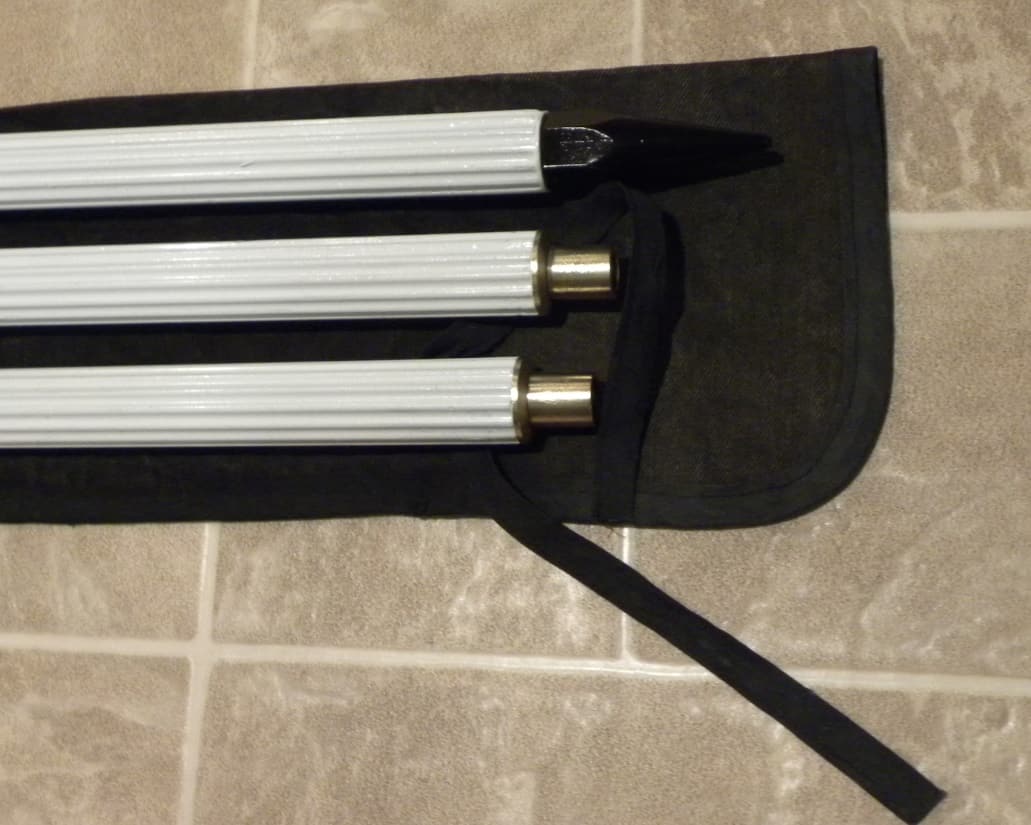I finally got my range poles restored. They appear to be Dietzgen "SITE-RITE" poles. The top and bottom sections had to be ordered separately from the middle sections. In other words, the sections are not interchangeable except the mid sections. The top section has a permanently sealed top. The bottom section has a fixed aluminum thread that cannot accept another section. I am not sure if the tip is the right one, but it works. Also found a cloth carrying case. The last image is from a Dietzgen catalog, but there is not date for the catalog.
wow! the old fluted ones....neat
You know you are gettin old, when your range pole has to be rebuilt!
Cool pics, none the less.
Thanks.
N
It seems like all of the new poles are going away from the 1 foot intervals. I guess it is just cheaper to paint the pole one solid color.
I remember Dad teaching me how to balance these between my fingertips to keep them plumb when I was about 7 years old...
Jim in AZ, post: 365550, member: 249 wrote: I remember Dad teaching me how to balance these between my fingertips to keep them plumb when I was about 7 years old...
Funny how gravity pretty much points down...
The last two that I received were not painted at one foot interval, it was at some odd distance.
A Harris, post: 365583, member: 81 wrote: The last two that I received were not painted at one foot interval, it was at some odd distance.
Once upon a time there was a really young and dumb tail-chainman named Paden. One rainy day this hapless chap was tasked with 'repainting' the scarred and weathered range pole collection. He was even provided masking tape.
The concept of the color changing at 1' intervals must have escaped the poor happy-go-lucky young Paden....he got his ass chewed up pretty good and had to repaint them at his boss's whim. To make matters worse, the paint took its good ol' easy time with drying...and the PC got still-wet-paint on his khakis the next day.
I still remember that ass-chewin'....the only good that came out of it was all the new cuss words I learned.
To show my age when I first started being an Instrument Man it was a standard procedure to use the 1 foot intervals to read stadia to check the distance chained. I wonder how many of today's younger surveyors even know what stadia is or how to read it.
Patented October 14, 1958.
https://docs.google.com/viewer?url=patentimages.storage.googleapis.com/pdfs/US2856218.pdf
The patent text mentions the flutes in connection with stiffness against flexing. I don't see that as a big deal - it would be stronger than a cylindrical pole with diameter equal to the bottom of the flutes, but less than that of a cylinder with the outside diameter.
I would think another advantage of the flutes would be to reduce the phasing (like phase of the moon) effect when the pole is lighted from the side. I didn't see that in a quick scan of the text. Is it also a benefit of the flutes?
Bushwhacker, post: 365619, member: 10727 wrote: To show my age when I first started being an Instrument Man it was a standard procedure to use the 1 foot intervals to read stadia to check the distance chained. I wonder how many of today's younger surveyors even know what stadia is or how to read it.
When I was a gunner it was indeed standard procedure to read stadia at the instrument for the PC (head chain) when chaining long lines. Although we didn't use chaining pins much, we used flagged nails in the same manner. The tail-chain would keep the chaining nails for a tally.
And the head-chain may want a check anytime during the chaining or when he got to where he was going. I remember one PC that had a rather unique signal for asking the gunner to read a stadia distance (which would then be conveyed up line by hand signals). He would turn sideways to line and place one end of his range pole at his crotch, and then tip the free end of the range pole upward by about 45å¡.
I guess this meant "how long?".....:pinch:









